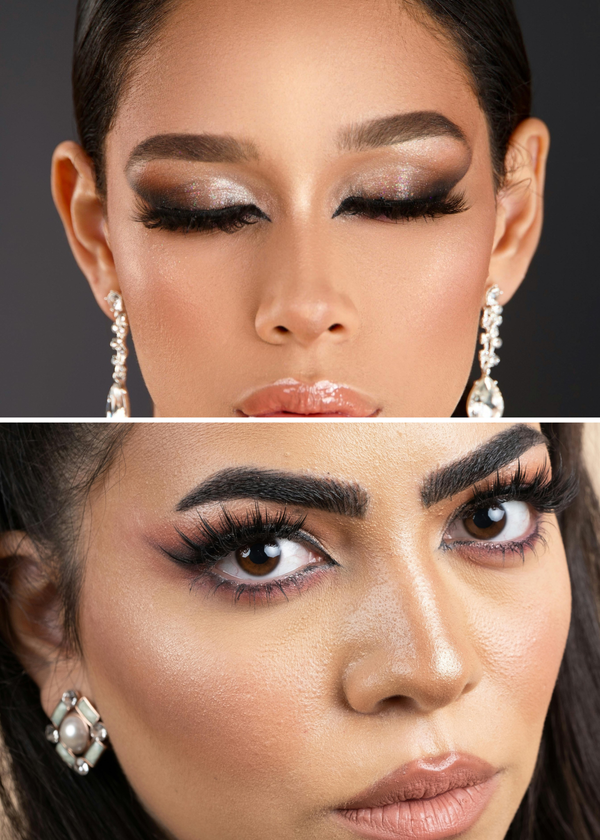Noise reduction technology has become a staple in our daily lives, especially with the rise of active noise canceling headphones. But is noise reduction bad for your ears? This article delves into the intricacies of noise reduction, exploring its benefits and potential risks. We'll also provide practical advice on how to use this technology responsibly to protect your hearing.
The Basics of Noise Reduction
Noise reduction technology, particularly active noise cancellation (ANC), works by using microphones to pick up external noise and then generating sound waves that are the exact opposite (anti-phase) to cancel it out. This technology is prevalent in over-ear headphones, in-ear earbuds, and even some hearing protection devices. The goal is to reduce background noise, allowing you to enjoy your music or podcasts without cranking up the volume.
However, while noise reduction can be a boon in noisy environments like a coffee shop or during a flight with jet engine noise, it's essential to understand how it affects your ears. The technology works by creating a quieter listening environment, but it doesn't eliminate the need for responsible listening habits.
Benefits of Noise Reduction Technology
One of the primary benefits of noise reduction technology is its ability to protect your hearing in noisy environments. By reducing the need to increase the listening volume, noise-canceling headphones can help prevent noise-induced hearing loss. This is particularly important in settings with loud external sounds, such as construction sites or busy streets.
Moreover, noise reduction can enhance your overall listening experience. By minimizing ambient noise, you can hear the original sound more clearly, whether it's your favorite song or an important phone call. This clarity can be especially beneficial for those who work in noisy environments or travel frequently.
Potential Risks of Noise Reduction
Despite its benefits, there are potential risks associated with noise reduction technology. One significant concern is the tendency to listen to music at high volumes for extended periods. Prolonged use of noise-canceling headphones at high volumes can lead to permanent hearing loss. It's crucial to monitor your listening volume and take breaks to protect your hearing health.
Another risk is the potential for over-reliance on noise-canceling technology. While it can be effective in reducing background noise, it doesn't replace the need for traditional hearing protection in extremely loud environments. For instance, using noise-canceling headphones in a setting with loud machinery may not provide adequate protection against noise-induced hearing loss.
How Active Noise Cancellation Works
Active noise cancellation (ANC) is a sophisticated technology that uses microphones to detect external noise and then generates sound waves to cancel it out. This process involves complex algorithms that analyze the frequency range of the surrounding noise and create an anti-phase sound wave to neutralize it. The result is a significant reduction in ambient noise, allowing for a more immersive listening experience.
ANC is particularly effective at canceling low frequencies, such as the hum of an airplane engine or the rumble of a train. However, it may be less effective at higher frequencies, such as human speech or high-pitched sounds. Understanding the limitations of ANC can help you use the technology more effectively and avoid potential hearing damage.
Noise Canceling Headphones: Good or Bad?
Noise-canceling headphones can be both good and bad for your ears, depending on how you use them. On the positive side, they can protect your hearing by reducing the need to increase the volume in noisy environments. This can be particularly beneficial for frequent travelers or those who work in loud settings.
However, the downside is that prolonged use at high volumes can lead to hearing damage. It's essential to use noise-canceling headphones responsibly, keeping the volume at a safe level and taking regular breaks. Additionally, it's important to be aware of your surroundings, as noise-canceling technology can sometimes make it difficult to hear important sounds, such as traffic or emergency alarms.
The Role of Noise Isolation
Noise isolation is another method of reducing external noise, but it works differently from active noise cancellation. Instead of using microphones and sound waves, noise isolation relies on physical barriers to block out surrounding noise. This can be achieved through the design of the headphones or earbuds, which create a seal around or in the ear canal.
Noise isolation can be effective in reducing ambient noise, but it may not provide the same level of reduction as ANC. However, it doesn't require batteries or complex technology, making it a more straightforward and often more affordable option. Understanding the differences between noise isolation and ANC can help you choose the right solution for your needs.
Hearing Protection and Noise Reduction
Protecting your hearing should always be a priority, especially in noisy environments. Noise reduction technology, including ANC and noise isolation, can play a crucial role in this. By reducing the need to increase the volume, these technologies can help prevent noise-induced hearing loss.
However, it's important to use these technologies responsibly. This means keeping the volume at a safe level, taking regular breaks, and being aware of your surroundings. In extremely loud environments, traditional hearing protection, such as earplugs or earmuffs, may still be necessary to provide adequate protection.
## The Science Behind Noise Canceling Technology
Noise canceling technology is a marvel of modern engineering. At its core, it uses active noise control to counteract external sound. This involves tiny microphones in the headphones that pick up outside noise and generate a sound wave that is the exact opposite, effectively canceling it out. This technology is particularly effective against low-frequency sounds, such as the hum of an airplane engine or the rumble of a train.
However, it's not just about blocking out loud noises. Noise canceling headphones are good for creating a quiet environment, allowing you to enjoy your music or podcasts without cranking up the volume level. This can be a game-changer for those who frequently find themselves in noisy environments. Brands like Bose have perfected this technology, making it possible to enjoy high-quality sound without the need for high volume, thus reducing the risk of noise induced hearing loss.
## Comparing Over Ear and In Ear Noise Canceling Headphones
When it comes to choosing between over ear headphones and in ear noise canceling earbuds, it often boils down to personal preference and specific needs. Over ear headphones generally offer better noise cancelation due to their larger size and ability to cover the entire ear. This makes them ideal for long flights or noisy commutes, where the goal is to block out as much outside noise as possible.
On the other hand, in ear noise canceling earbuds are more portable and convenient for everyday use. They are perfect for certain situations like a quick trip to the gym or a couple hours at a coffee shop. While they may not offer the same level of noise cancelation as their over ear counterparts, they are still effective at reducing high frequency sounds and providing a quieter listening experience. Both types have their pros and cons, but either can help protect your hearing by allowing you to listen at lower volumes.
This expansion adds depth to the article by exploring the science behind noise canceling technology and comparing different types of noise canceling headphones, providing readers with valuable insights and practical examples.
The Impact of Prolonged Use
Prolonged use of noise-canceling headphones can have both positive and negative effects on your hearing. On the positive side, they can reduce the need to increase the volume, which can help protect your hearing. However, prolonged use at high volumes can lead to hearing damage.
It's essential to monitor your listening habits and take regular breaks to protect your hearing health. This means keeping the volume at a safe level, taking breaks every couple of hours, and being aware of any signs of hearing damage, such as ringing in the ears or difficulty hearing.
Choosing the Right Noise-Canceling Headphones
When choosing noise-canceling headphones, it's important to consider your specific needs and preferences. Over-ear headphones tend to provide better noise cancellation and comfort, making them a good choice for long listening sessions. In-ear earbuds, on the other hand, are more portable and can be a better option for on-the-go use.
It's also important to consider the level of noise cancellation you need. If you frequently travel or work in noisy environments, you may benefit from headphones with advanced ANC technology. However, if you primarily use headphones in quieter settings, noise isolation may be sufficient.
The Importance of Volume Control
One of the most critical aspects of using noise-canceling headphones is maintaining proper volume control. Listening to music at high volumes can lead to permanent hearing loss, regardless of whether you're using noise-canceling technology. It's essential to keep the volume at a safe level and take regular breaks to protect your hearing health.
Using the 60/60 rule can be a helpful guideline: listen at no more than 60% of the maximum volume for no more than 60 minutes at a time. This can help prevent hearing damage and ensure that you can enjoy your music for years to come.
The Future of Noise Reduction Technology
Noise reduction technology is continually evolving, with new advancements aimed at improving both effectiveness and user experience. Future developments may include more sophisticated algorithms for better noise cancellation, improved battery life, and enhanced comfort and design.
As technology continues to advance, it's essential to stay informed about the latest developments and understand how to use these technologies responsibly. By doing so, you can enjoy the benefits of noise reduction while protecting your hearing health.
Practical Tips for Using Noise-Canceling Headphones
To get the most out of your noise-canceling headphones while protecting your hearing, consider the following tips:
- Monitor Your Volume: Keep the volume at a safe level and avoid listening at high volumes for extended periods.
- Take Regular Breaks: Give your ears a rest by taking breaks every couple of hours.
- Be Aware of Your Surroundings: Use noise-canceling headphones responsibly and be aware of important sounds, such as traffic or emergency alarms.
- Choose the Right Headphones: Consider your specific needs and preferences when choosing noise-canceling headphones, and opt for a model that provides the right level of noise cancellation for your environment.
FAQs
1. Can noise-canceling headphones cause hearing damage?
Yes, prolonged use of noise-canceling headphones at high volumes can lead to hearing damage. It's essential to monitor your volume and take regular breaks to protect your hearing health.
2. How does active noise cancellation work?
Active noise cancellation works by using microphones to detect external noise and generating sound waves that are the exact opposite (anti-phase) to cancel it out. This process reduces ambient noise, allowing for a more immersive listening experience.
3. Are noise-canceling headphones better than regular headphones?
Noise-canceling headphones can provide a better listening experience in noisy environments by reducing background noise. However, it's important to use them responsibly to avoid potential hearing damage. Regular headphones may be sufficient in quieter settings.
Summary
Noise reduction technology, including active noise cancellation and noise isolation, can provide significant benefits for your hearing health by reducing the need to increase the volume in noisy environments. However, it's essential to use these technologies responsibly to avoid potential hearing damage. By monitoring your volume, taking regular breaks, and choosing the right headphones for your needs, you can enjoy the benefits of noise reduction while protecting your hearing.








